|
Pierrepont
Farm, Surrey
Owned
and managed by the Countryside Restoration
Trust, Pierrpont Farm in Surrey is run
as a dairy farm, with a herd of fine
Jersey cows that use an auromated milking
parlour, so they can come and go as
they please, milking themselves whenever
they feel the need!
In
early September the Countryside Restoration Trust (CRT) with the aid of
Swift Conservation erected a dozen Swift nest boxes into the clock
tower at the new dairy at Pierrepont Farm at Frensham in Surrey, which
won the Special Award for Rural Conservation last year as part of the
Waverley Design Awards. This building has been constructed to be
cow-friendly, farmer-friendly and wildlife-friendly and to blend into
its rural setting. The CRT hopes in due course to attract Swifts into
the timber clock tower, which houses the feed hopper.
Robin Page, CRT Chairman, says: "The Swift is a fantastic
bird. Each year more nesting sites are lost to development and modernisation. By
creating these boxes and making them available in a modern building we are
showing how room can be made for Swifts. We hope others will follow our
example."
Photographs
© Countryside Restoration Trust
|

The
clock tower at Pierrepont Farm (above)
being inspected prior to fitting the
nest places. Not much was required to
do this, just a few pieces of board
and some screws. If you would like our
help to set up a similar project, just
let us know!
|
|
 It
was easy to adapt the existing open
eaves of the clock tower. It
was easy to adapt the existing open
eaves of the clock tower.
All
that was needed was a few pieces of
timber.
Vertical dividers were
inserted and secured to provide separate
compartments for each pair of Swifts,
then a covering was provided to the
nesting area, with entrance holes ready
cut into it (see right-hand image).
|
 To
help the Swifts find the nest boxes next
spring, speakers playing Swift calls will be placed next to the nest boxes, and
broadcast the sounds of breeding Swifts to attract potential new occupants
during the spring and summer. To
help the Swifts find the nest boxes next
spring, speakers playing Swift calls will be placed next to the nest boxes, and
broadcast the sounds of breeding Swifts to attract potential new occupants
during the spring and summer.
Sometimes Swifts take a while to adopt new sites,
but if it sounds like it is already being used they are more likely to find a
site.
|
Swifts
get new homes at Hackney and Gospel
Oak rail stations
Below:
The lift tower at Gospel Oak Overground
Station, almost finished,and showing
the timber soffit box feature.
Below
right:
The nestplaces created by simple
adaptation of the existing soffit
box to accommodate four Swift nest
places.
© Photos
E
Mayer Swift Conservation
|
We
spotted opportunities for Swift
nestboxes at Gospel Oak station,
where new lift towers were being
built to aid access to this station.
With a lot of help from our supporters
we found the right people to talk
to, and in just a few short days
the boxes were up, not just at Gospel
Oak but at Hackney Central too!
This
success was achieved by working closely with the Network Rail project.
We expected it might take months or even years to get agreement and
implementation, but it was only days. Now we are working on the
possibility of repeating this at other sites.
|
|
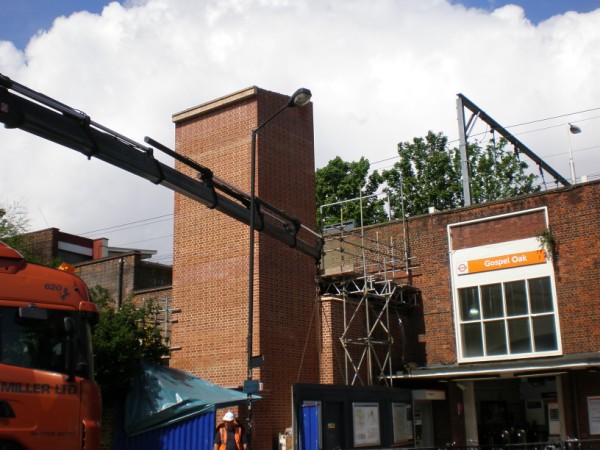
|
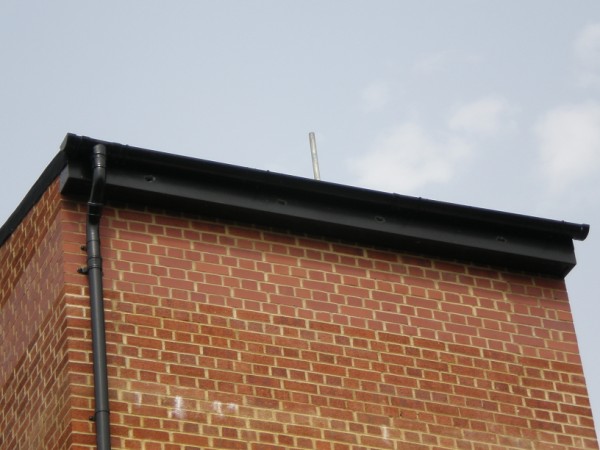
|
|
Restored
Reading Church gets 24 new Swift
nest boxes
We've been working for most of this
year with Richard Oxley of Oxley
Conservation Ltd, restoration
advisers on this project, on plans
to fit new Swift nest boxes to the
spire of the Church of the Sacred
Heart in Reading. It was always
going to be a difficult and expensive
job as the time we had to work in
the spire was limited, and the scope
of the project was potentially large.
Very
helpfully, we were given time
to visit the site, assess the situation,
measure up and design boxes to fit.
This, and the fact that Swifts were
already nesting in the road, were
the keys to success.
Luckily
we found a Swift Angel in the form
of Michael Shemilt, keen Swift enthusiast
and activist in the nearby town
of Henley-on-Thames, who very generously
agreed to foot the bill for 24 new
nest boxes, all made from recycled
plastic plank by the Filchris company.
Above
right:
The Church of the Sacred Heart,
and across the road, a very hopeful sign!
|
 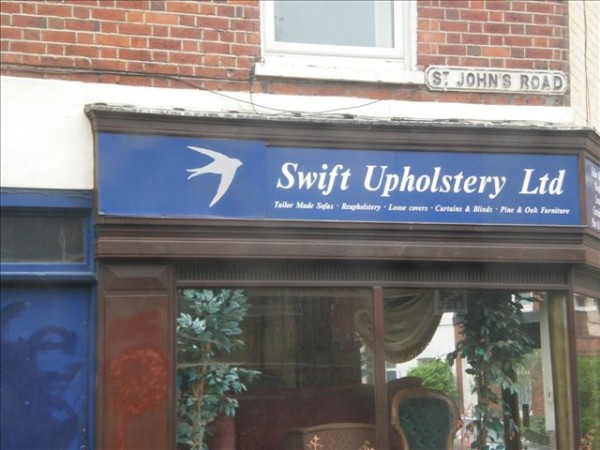
|
|
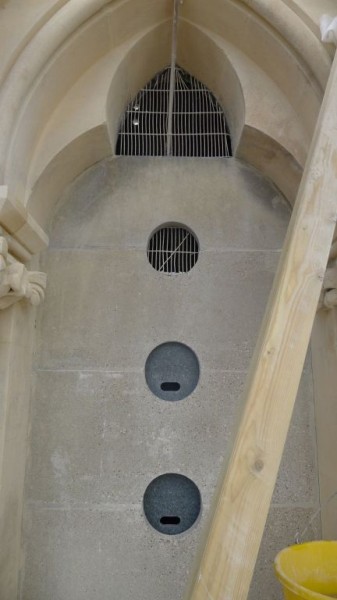 Outside:
on the left you can see one of the spire "windows".
This is what the Swifts will see. Outside:
on the left you can see one of the spire "windows".
This is what the Swifts will see.
Just
two of the four boxes are visible. You can also see that all
other apertures are filled with
steel mesh. This is to stop feral
pigeons gaining access, but also
to prevent Swifts making a mistake
and getting trapped inside the tower
and dying there.
|
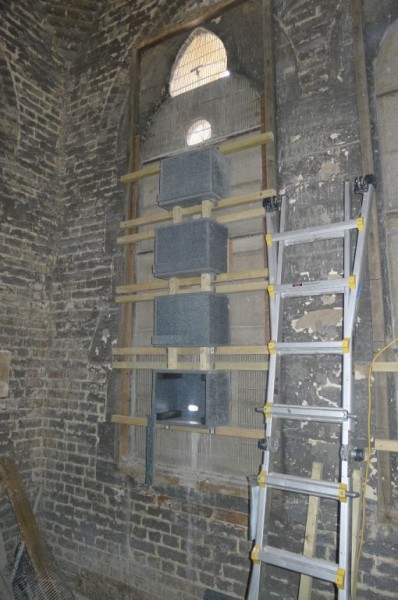 Inside:
on the left you can see four nest boxes fitted behind
round holes in the Spire's stone "windows". Inside:
on the left you can see four nest boxes fitted behind
round holes in the Spire's stone "windows".
There are eight boxes
fitted on three of
the four sides.
Our survey
showed that of the four sides, three
were easily accessible to Swifts,
and so 24 boxes were
fitted.
They are all made
of recycled plastic plank, an economical
and durable material with good insulation
properties.
Photos
© Richard Oxley; Oxley Conservation
Ltd. & E Mayer, Swift Conservation
|
111
New Cavendish St, London W1 gets Swift, Bird & Bat Boxes
|

|
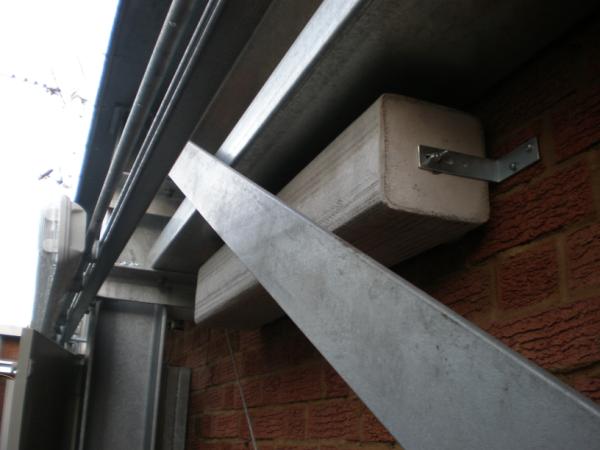
|

|
|
Bat
"tubes" & a bird box inset
into the wall
|
Triple
Swift nest box inside the plant room
|
Plant
room exterior with 6 bat tubes visible
|
Swift,
Pipistrelle Bat and Black Redstart / Wagtail nest places
have been installed in the walls of roof top plant rooms
high above Oxford Circus in Central London! The contractors,
Faithdean plc, required a multi-species solution to
improve biodiversity at this site to meet a Planning
Requirement. Swift Conservation was asked to advise,
and as a result five key urban species, all know to be present in or near the
area, were selected
for assistance; Swift, Pipistrelle Bat, Grey and Pied Wagtails,
and Black Redstarts. By providing shelter plus food
resources on an adjacent "green roof" it is
hoped these species will move in and thrive. Photos ©
E Mayer - Swift Conservation
Lambeth
Hospital & the London Borough of Lambeth


Steven
Robinson, a Community Psychiatric Nurse at the Lambeth
Hospital, was keen to see Swifts breeding there. With
the help of Swift Conservation (who surveyed the site
for nest box positions), Mitie, the Hospital's estates management
team who fitted the boxes, and Lambeth Council's Parks & Green Spaces
Team who obtained funding for the project from Veolia, he
achieved his aim. Here you can see some of the boxes
and the team fitting them to the walls of
the ward blocks.
Photographs
left © Steven
Robinson (SLaM) and right © Iain Boulton (London
Borough of Lambeth)
London Borough of Islington
at Highbury & Islington

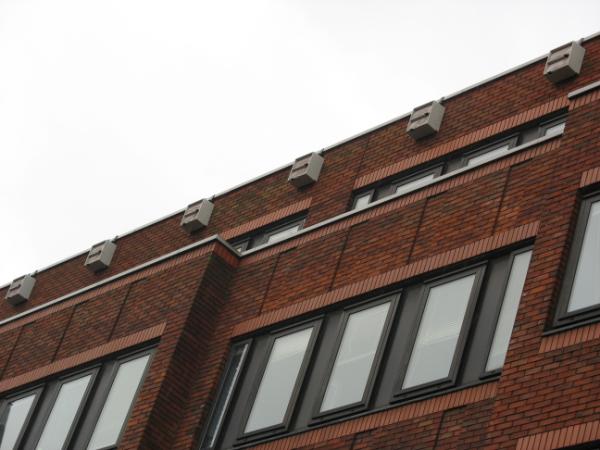
Swift
Conservation
was invited by Leanne Brisland and Andrew
Bedford of the London Borough of Islington to advise
on establishing Swift nestplaces at
their Municipal Offices at Highbury and Islington. The 10 double chamber Schwegler
boxes, shown above, were fitted by the local building
management team, and have been installed in time for the 2007 nesting
season. Some Swifts are already nesting nearby, so the
chances for occupation are excellent, especially if,
as is hoped, a sound system is installed and used to
attract the birds. Photos © E Mayer
/ Leanne Brisland
Zoological Society of London - ZSL
London Zoo


ZSL
London Zoo invited Swift Conservation to advise on setting up Swift
colonies at the Zoo in Regent's Park. We picked two sites, the wide
shaded eaves of the "Bugs!" house and the Bear cave in the Mappin
Terraces. Both were set up early in 2003, and Swift call recordings
were played to attract the birds. The first Swifts visited the "Bugs!"
nest boxes in late Summer 2004, and have bred ever since, with two
pairs breeding this year, 2012. The boxes used are Schwegler types,
available from Jacobi Jayne and Co. Photos © Zoological Society of London and E Mayer.
London Borough of
Barnet - Notting Hill Housing Trust
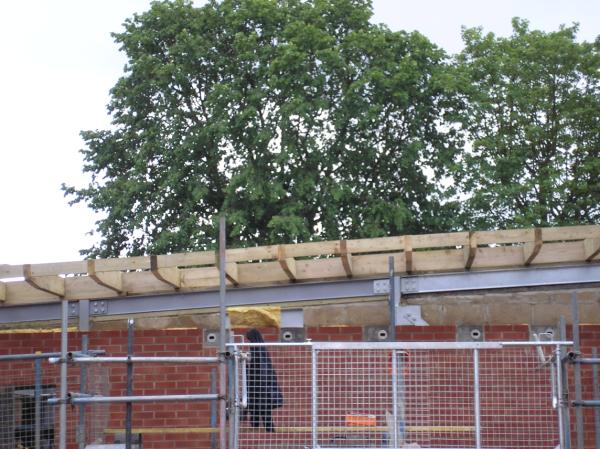 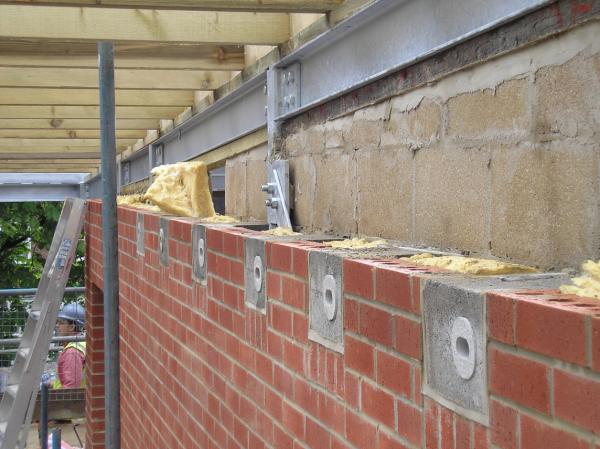
Local
journalist Paul Harrison put together a pioneering project
in New Barnet, bringing together Swift Conservation, the
Notting Hill Housing Trust, the London Borough of Barnet
and Higgins Contractors Ltd to achieve the Summer 2006
installation
of Swift Brick nestboxes under the north-west facing
eaves of this new community development on the corner
of York Road and Gloucester Road. Photos © E Mayer.
London Borough of Camden - Swiss Cottage

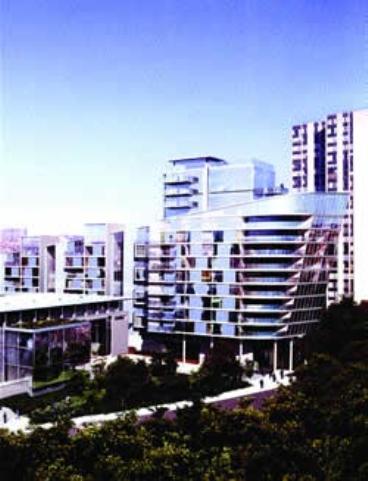
The
London Borough of Camden was keen to improve biodiversity at its major
project at Swiss Cottage, designed by Terry Farrell Architects. Swift
Conservation was asked to advise on the installation of Schwegler Swift
Bricks (just visible above as small holes) into walls where they are
suitably high up and sheltered from the sun.
Photos © London Borough of Camden and EMayer.
St Mary's Church Chantry House - Henley-on-Thames
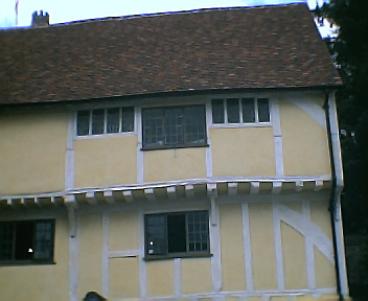
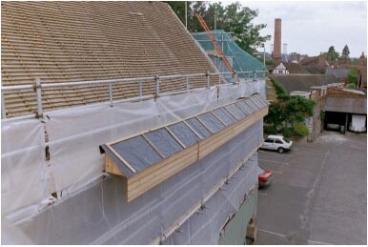
Our
very first project! Oxley Conservation, the specialist building
consultants managing this project, invited Swift Conservation to advise
on ways to retain the locally-famous Swift colony during the works to
replace the roof and completely repair and conserve this superb
medieval building. Swift Conservation designed the temporary nesting
eaves (see above right) which provided roosting space for the birds
while works continued on the building. The roof was available again to
the Swifts the following year, with their nests restored to the
original eaves, and they have enjoyed successful breeding seasons ever
since. Much of the success of this
project was due to the positive input and cooperation of the building contractors IJP Building Conservation. Photos © E Mayer.
 Need advice? For more information contact
Swift Conservation
Need advice? For more information contact
Swift Conservation
 Next - Education, Training and Surveys
Next - Education, Training and Surveys
 Back to Contents Back to Contents
|
 Our Projects
Our Projects
 It
was easy to adapt the existing open
eaves of the clock tower.
It
was easy to adapt the existing open
eaves of the clock tower.  To
help the Swifts find the nest boxes next
spring, speakers playing Swift calls will be placed next to the nest boxes, and
broadcast the sounds of breeding Swifts to attract potential new occupants
during the spring and summer.
To
help the Swifts find the nest boxes next
spring, speakers playing Swift calls will be placed next to the nest boxes, and
broadcast the sounds of breeding Swifts to attract potential new occupants
during the spring and summer. 



 Outside:
on the left you can see one of the spire "windows".
This is what the Swifts will see.
Outside:
on the left you can see one of the spire "windows".
This is what the Swifts will see. Inside:
on the left you can see four nest boxes fitted behind
round holes in the Spire's stone "windows".
Inside:
on the left you can see four nest boxes fitted behind
round holes in the Spire's stone "windows".















